How to Mix Fiberglass Resin & Hardener
Car and boating enthusiasts alike encounter the need for fiberglass repair from time to time. Doing this job yourself requires diligence, speed and attention to safety. Fiberglass particles are dangerous to inhale and cause discomfort to the skin. Precautions must be taken to prevent contact with the skin or the lungs.
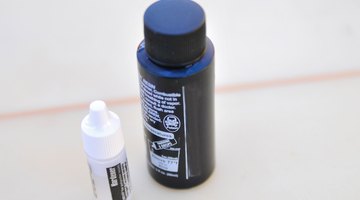
Getting comfortable with the mixing and application of resin and hardener is the key to a successful fiber-glassing project. Too much resin and the repair will be mush, but too much hardener and the project is over before it ever begins. A few practice runs will get this repair project off the ground in no time.
Things You Will Need
- Safety glasses
- Gloves
- Ventilator mask
- Long-sleeve shirt
- Rubbing alcohol
- Cotton balls
- Scissors
- Fiberglass cloth
- Liquid hardener
- Liquid resin
- Bowl
- Plastic spoon or knife
Tip
Do not mix resin and hardener in a temperature below 60 F. Mix a few "practice" batches to get a feel for the application of the resin and hardener to the fiberglass cloth.
Warning
Wear safety glasses, gloves and ventilator mask at all times when working with fiberglass and the resin/hardener mixture. Wear long-sleeves to avoid contact with the skin.
-
Allow the resin and hardener to sit in the work area it for a few hours. This will allow the resin and hardener to reach room temperature. Wipe the surface to be repaired with rubbing alcohol on cotton balls.
-
Measure the area of fiberglass that needs repair. Cut strips of fiberglass cloth to fit using a sharp pair of scissors. Set the fiberglass in a spot that is easily within reach.
-
Add liquid hardener and resin in a small bowl in proportions as recommended by the manufacturer. Mix the two well using a plastic spoon or knife.
-
Add the resin and hardener to the fiberglass cloth strips using the plastic spoon or knife used to stir the mixture. Place the cloth down flat over the repair spot. Smooth it with the plastic utensil.
-
Continue coating fiberglass cloth with the resin and hardener until the surface is covered, or the mixture begins to harden. If resin and hardener mix becomes stringy you should discard the batch and mix a new one.

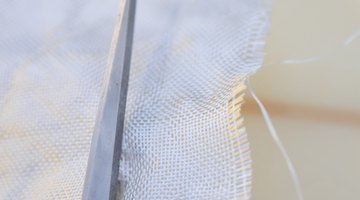
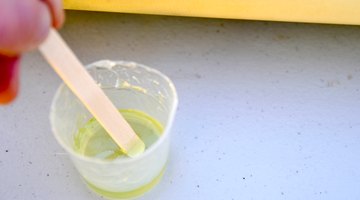
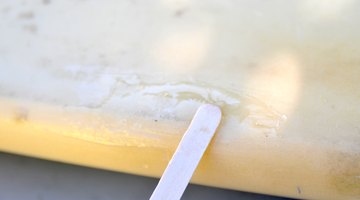
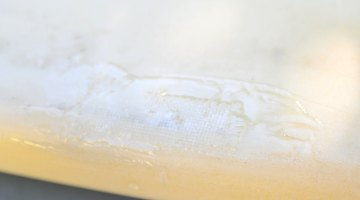
The Drip Cap
- Car and boating enthusiasts alike encounter the need for fiberglass repair from time to time.
- Fiberglass particles are dangerous to inhale and cause discomfort to the skin.
- A few practice runs will get this repair project off the ground in no time.
- Wipe the surface to be repaired with rubbing alcohol on cotton balls.
- Smooth it with the plastic utensil.
Resources
Photo Credits
- Rich Ellgen/Demand Media
- Rich Ellgen/Demand Media
- Rich Ellgen/Demand Media
- Rich Ellgen/Demand Media
- Rich Ellgen/Demand Media
- Rich Ellgen/Demand Media
- Rich Ellgen/Demand Media
More Articles



